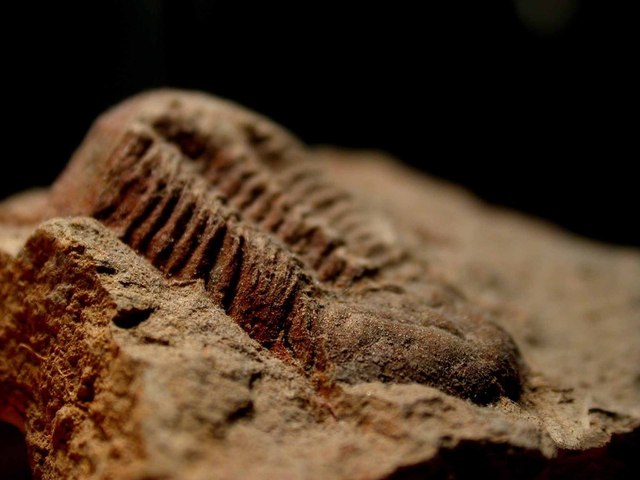The World’s Most Exciting Fossil Museum
 When he is not fixing people’s pipes as part of regular residential plumbing services, Steve Etches enjoys nothing better than scanning the seas down in Kimmeridge Bay in Dorset, awaiting ancient lifeforms to show themselves.
When he is not fixing people’s pipes as part of regular residential plumbing services, Steve Etches enjoys nothing better than scanning the seas down in Kimmeridge Bay in Dorset, awaiting ancient lifeforms to show themselves.
For more than 35 years, the 67-year-old, who runs a plumbing and heating company, has spent his spare time carefully finding, cleaning and exploring a mind-blowing selection of over 2,000 marine fossils, from up to 150 million years back, including several world-firsts.
Incredibly, only 10 percent of Steve’s discoveries in the late Jurassic Kimmeridgian period are on display in the carbon-neutral Etches Collection museum, which opened late last year in the village of Kimmeridge, a brief walk from Steve’s house, where he once placed everything in the garage.
All shiny and wooden, the memorial is shaped somewhat like the hull of a ship, With the exhibits in glass cases at the lower half, over which the fossils are brought to life with giant screens showing CGI versions of monsters that once swam in our oceans, giving the effect of being in an aquarium.
Here are a few of Steve’s most important finds…
The impressive one
Bear in mind the giant mosasaur which jumps from the water in Jurassic Earth? Steve’s collection includes this striking jaw of an equally powerful aquatic monster: the pliosaur.
It was a hard-won fossil, since it did not come out in one hit. Steve, who found that the hinge part and then, over four decades, collected and stuck pieces back together, with the tooth-bearing section tantalisingly staying put in the cliff.
Before his wife was going to have their last child and before his day job in hot water service repairs, he went around there very early one morning and there was a massive great hole in the cliff, about 40-foot long and this terrific heap of sand, rubble and grass at the foot of it.
He remembers pulling the top of the shale debris back and the tip of the jaw stuck out and he knew he had got it! There are two pieces he never found and a few teeth missing, but after that week they had a very severe storm and it removed all the debris, so he considers themselves lucky.
The young one
Ichthyosaurs are now in vogue with palaeontologists after several recent discoveries, and Steve’s juvenile specimen, the most complete Kimmeridgian ichthyosaur thus far, is of special interest.
Apart from having a full stomach, showing this marine reptile had eaten squid and fish before it expired, there is also a section of skin over its ribs, which shows lines which might have helped streamline the animal.
After Steve and a friend spotted what looked like fish bones sticking out of the base of a cliff, it was another bold mission to recoup the fossil. They cut a massive great gap in the cliff, it took all day – but it was a justifiable threat we were ready to take.
The stomach segment came out and they worked in the dark to find the skull, digging out an enormous slab, not actually able to find out what it was. They carried it back a mile and a half – it took them about three and a half hours to clean it up and discover the tip of the jaw. It was then he knew he had the whole lot.
Those Darwin did not find
Steve has a collection of goose barnacles (nicknamed Darwin’s Missing Barnacles) on display in the museum’s exhibition display services. Charles Darwin was enthusiastic about those arthropods and analyzed several living specimens off the coast of Japan, but could never prove they’d originated in the Jurassic period.
A few years ago, a professor came to see Steve’s barnacles and was quite excited. He had said, ‘I don’t know if you realise, but I’m pretty sure this complete goose barnacle is the best I’ve ever seen’.
Steve’s find proved something Darwin had just been able to hypothesise, and therefore he has been given deserved recognition from the scientific community. Since that time, he discovered a 2.8 metre [fossilised] log, covered in thousands of Barnacles – and they are the most beautiful, best maintained Jurassic barnacles anybody’s ever seen.
The egg hunt
Another world first for Steve was his discovery of ammonite eggs. He found what seemed like two sacks of eggs, but without a reference book on little fossil eggs to consult, he compared them to modern-day cuttlefish eggs.
The form of the cuttlefish eggs is like those, so he thought that if they are not cuttlefish eggs, the other common cephalopod we have got are ammonites. There are over 8,000 species of ammonites, but nobody found the eggs.
After discovering that they were near real ammonite fossils, he teamed up with A world-famous ammonite palaeontologist to write a joint paper on his fossils and whether they were really ammonite eggs. And he’s since found more that are going to be taken out of their modular exhibition spaces to be CAT scanned to determine if they have miniature ammonite embryos inside.

